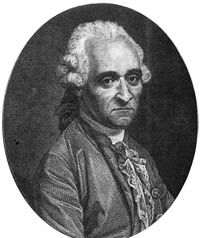The History of Tarot Cards
Tarot cards are closely related to modern playing cards as they share the same origins. The original use of Tarot cards was for entertainment and education.
The history of tarot cards is surrounded by mystery. Tarot cards contain unique symbolism, which cannot be traced to one specific culture. They are rumoured to contain Egyptian wisdom, Mithras religion, Medieval heretics or Pagan Celtic beliefs. It is also possible that the cards have eastern origins in China, India or Persia and that they were brought to Europe by gypsies, returning crusaders, Arabs or they simply could have been invented in Europe.
Playing cards were in eastern culture as early as the 10th century however these eastern cards were a lot different to those found in Europe. The name ‘Tarot’ itself has been described as Egyptian, Hebrew, Latin, and Italian. It is most likely that the word used to describe the cards has Italian origins. The Italian word for cards is ‘Tarocchi’ which comes from the Valley of Taro River north of Italy. This is where some believe the cards originated in the 15th century. The modern tarot pack is said to descend from the French Tarot of Marseillies that contains 78 cards with 22 trumps.
It is believed that the trumps were later added to the traditional playing cards to educate players on the ways of the world and the structure of European society. German cards from the eighteenth century show a shift in the design of the trumps to anything the creator liked such as animals, explorers or known kings and queens.
Different packs were designed to teach different things for example logic, Greek Mythology, Religion, Geography and even the art of Carving of meat and fish.
Over the years traditional cards came under pressure from the church. The trumps representing the Pope, Female Pope, Empress and Emperor were often replaced. The church regarded such cards to be against the doctrine of providence. In 1432 the cards were denounced as the creation of Satan. The 1570s saw further backlash for the cards as the church attacked gambling and theatre as they were seen to be promoting false gods and idols. However Tarot cards were often exempt from bans and were a fixture in upper-class society.
 Tarot cards were first used on a more spiritual level around 1781. Swiss occult writer, clergyman and freemason Antoine Court de Gēbelin wrote of Tarot cards in his book on civilization. He believed the cards hid information on the structure of the world that had been hidden in a simple game by Egyptian preists to avoid the loss of their knowledge in the world of increasing religious dominance.
Tarot cards were first used on a more spiritual level around 1781. Swiss occult writer, clergyman and freemason Antoine Court de Gēbelin wrote of Tarot cards in his book on civilization. He believed the cards hid information on the structure of the world that had been hidden in a simple game by Egyptian preists to avoid the loss of their knowledge in the world of increasing religious dominance.
The first known fortune-teller to have used Tarot cards is Alliette from Paris. He designed cards that showed possible future events such as travel, sadness, love and fortune. In 1856 Eliphas Lēvi linked the Tarot cards into the system of Cabala making the connection between the 22 trumps and the letters of the Hebrew alphabet. This placed the Tarot cards in the realm of occultism.
Timeline
10 C- Chinese had playing cards.
1370- 1380s – a monk (Brother John) in Switzerland wrote about cards.
1392 - King Charles VI of France had three packs of Tarot cards made or some believe playing cards.
1397- Paris regulation issued forbidding cards to be used on working days.
14C- cards appeared on the European scene.
1432- cards were denounced as the creation of Satan.
15th century oldest surviving cards 3 sets made for the Visconti family
1570s – published attack on gambling and theatre as they are said to promote false gods and idols.
